Düsseldorf, Rhein-Rhur (DUS / EDDL) Germany
| IATA: DUS – ICAO: EDDL | |||
|---|---|---|---|
| Summary | |||
| Airport type | Public, Düsseldorf International Airport, is the third largest airport in Germany with 16.6 million passengers predicted to pass through this year. Only Munich International Airport and Frankfurt International Airport have more passengers. The airport serves an important hub for the airline LTU and an important secondary hub for Lufthansa. Lufthansa has 270 flights per day (43 destinations) from or to Düsseldorf the airport's 70 hosted airlines support flights to 186 non-stop-destinations on all continents (except for Oceania). The airport has up to 700 takeoffs and landings per day. | ||
| Operator | Flughafen Düsseldorf GmbH | ||
| Serves | 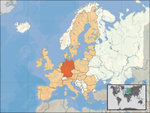    Düsseldorf Düsseldorf | ||
| Elevation AMSL | 44.8 m / 147 ft | ||
| Coordinates |  | ||
| Runways | |||
| Direction | Length | Surface | |
| m | ft | ||
| 05R/23L | 3,000 | 9,842 | Concrete |
| 05L/23R | 2,700 | 8,858 | Concrete |
http://www.duesseldorf-international.de/
| Year | Sony | Spot Location | |
|---|---|---|---|
| Super8 | |||
| 2004 | Digital | At DUS you have a great public terrace view | |
Coming soon my movie on this airport
The airport
With 18.15 million passengers passing through in 2008, only Frankfurt Airport and Munich Airport served more passengers in Germany. The airport serves as the most important hub for Air Berlin and as a secondary hub for Lufthansa, which offers about 300 flights per day to 53 destinations. In May 2008, Lufthansa re-launched long-haul operations from the airport. The airport's 70 hosted airlines support flights to 186 non-stop-destinations. The airport has up to 750 takeoffs and landings per day.
Düsseldorf International Airport is located about 9 km (5.6 mi) from the centre of Düsseldorf, Germany, and is the primary airport for the Rhine-Ruhr region—the largest urban area in Germany and among the largest metropolitan areas of the world.
Düsseldorf International has two runways, which are 3,000 m and 2,700 m long. There are plans to extend the 3,000 m runway to 3,600 m, but the city of Ratingen, which lies in the approach path of the runway, is blocking them.
107 airplane parking positions are available. The current terminal building is capable of handling up to 22 million passengers per year. However, due to an agreement with residents in nearby Ratingen (the so called Angerlandvergleich), this capacity may not be reached within the next few years, as aircraft movements are restricted. Düsseldorf International Airport is able to handle the new superjumbo Airbus A380 aircraft. On 12 November 2006, the first A380 landed in Düsseldorf as part of a Lufthansa promotion flight. Lufthansa is planning to use Düsseldorf International as the diversion airport for A380 in case of bad weather in Frankfurt.
Owners of the airport are:
- 50% Landeshauptstadt (state capital) Düsseldorf
- 50% Airport Partners GmbH (Ownership of Airport Partners GmbH: 40% Hochtief AirPort GmbH, 20% Hochtief AirPort Capital KGaA, 40% Dublin Airport Authority plc (through its wholly owned subsidiary Aer Rianta International cpt))
History
The first aviation event in the area was the landing of Zeppelin LZ3 on 19 September 1909 about 3 km (2 miles) south of the present airport. The present airport was on 19 April 1927, after two years of construction. Deutsche Lufthansa opened routes to Berlin, Hamburg, Cologne and Geneva. With the start of the the Second World War civil use of the airport ceased in September 1939 with the airfield being used by the military.
At the end of the war the airport reopened for civil use in 1948. With the area being under British administration the first flights were operated by British European Airways to London Northolt. In 1950 the main runway is extended to 2475 metres.
In 1964 planning begins for the construction of a new terminal, with the capacity for 1.4 million passengers and in 1969 the main runway is lengthened to 3000 metres.
In 1973 the new central building and the Terminal B are opened and in 1975 the railroad connection between the Düsseldorf central station and the airport starts operation. Terminal A was opened in 1977.
In 1986 Terminal C was opened and 8.22 million passengers use the airport - making it number two in Germany. By 1992 when a second runway is built 12.3 million passengers use the airport.
Fire breaks out on the roof of the terminal A on 11 April 1997, caused by welding work and insufficient structural fire protection and 17 people die, mostly due to smoke inhalation, with many more hospitalised. Damage to the airport is estimated to be in the hundreds of millions. At the time, the fire is the biggest public disaster in the history of North Rhine-Westphalia. While repairs are ongoing, passengers are being housed in big tents. In November Terminal C is completely redeveloped, with three lightweight construction halls serving as departure areas.
Also in 1997 construction begins on the new inter-city railway station at the eastern edge of the airport. In 1998 the rebuilt Terminal A is reopened and the airport changes its name from "Rhine Ruhr airport" to "Düsseldorf International". Reconstruction of the central building and Terminal B begins.
The first stage in the "Airport 2000+" programme commences in 1999 with the laying of a foundation stone for a underground parking garage under the new terminal.
The new Düsseldorf Airport railway station is opened in May 2000, with the capacity of 300 train departures daily. 16 million passengers use the airport that year; Düsseldorf is now the third biggest airport in Germany. The new departures hall and Terminal B are opened in July 2001 after 2½ years of construction time; the rebuilt Gebäude Ost is reopened.
In 2002 the inter-terminal shuttle bus service is replaced by the suspended monorail called the SkyTrain connects the terminal building with the InterCity train station. The monorail travels the 2.5 kilometres between the terminal and station at a maximum speed of 50 km/h. The system was developed by Siemens and is based on the similar H-Bahn operating with two lines on Dortmund university campus.


/https%3A%2F%2Fprofilepics.canalblog.com%2Fprofilepics%2F8%2F1%2F81057.jpg)
/https%3A%2F%2Fstorage.canalblog.com%2F20%2F39%2F97146%2F32300127_o.jpg)
/https%3A%2F%2Fstorage.canalblog.com%2F12%2F78%2F97146%2F30672854_o.jpg)
/https%3A%2F%2Fstorage.canalblog.com%2F26%2F90%2F97146%2F27985019_o.jpg)
/https%3A%2F%2Fstorage.canalblog.com%2F37%2F46%2F97146%2F27230276_o.jpg)
/https%3A%2F%2Fstorage.canalblog.com%2F33%2F59%2F97146%2F21981067_o.jpg)











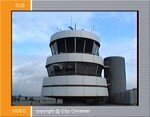













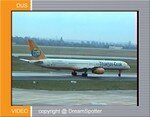









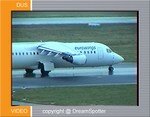

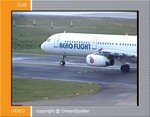






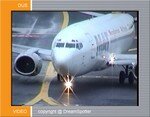





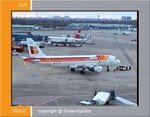




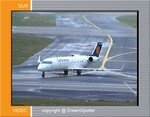
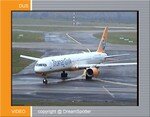

















/http%3A%2F%2Fstorage.canalblog.com%2F92%2F02%2F97146%2F77995753_o.jpeg)
/http%3A%2F%2Fstorage.canalblog.com%2F16%2F35%2F97146%2F57370178_o.jpg)
/http%3A%2F%2Fstorage.canalblog.com%2F68%2F93%2F97146%2F20992272_o.jpg)
/http%3A%2F%2Fstorage.canalblog.com%2F26%2F27%2F97146%2F33852310_o.jpg)